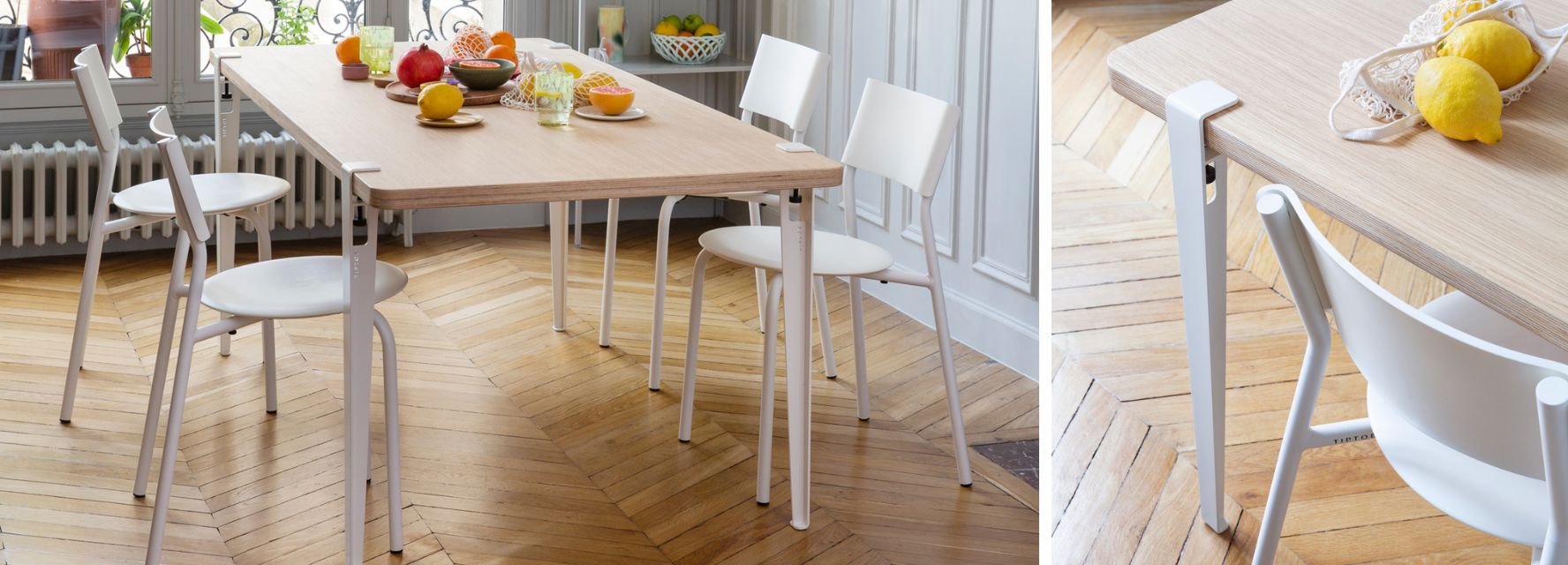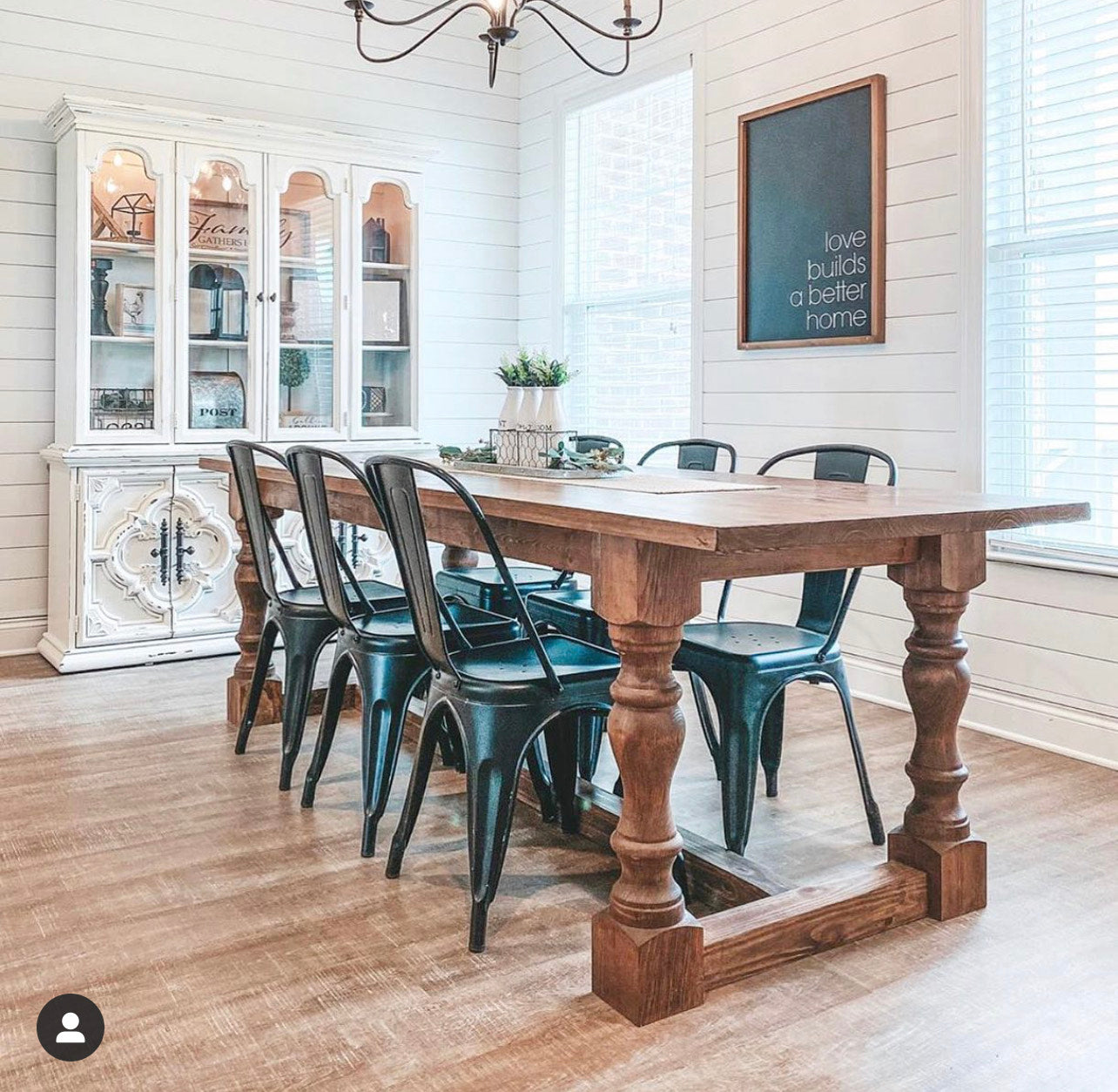Why Custom Dining Room Table Legs Are Worth the Investment
Why Custom Dining Room Table Legs Are Worth the Investment
Blog Article
Just How to Pick the Perfect Dining-room Table Legs for Your Home Decoration
Choosing the optimal dining room table legs is a nuanced procedure that needs careful factor to consider of numerous elements, including your space constraints, aesthetic choices, and sensible needs. The interaction between dimensions, materials, and styles can dramatically influence the atmosphere of your dining location, making it crucial to approach this choice carefully.
Assess Your Eating Room
Evaluating your dining space is essential for picking the right table legs that complement both aesthetics and performance. Begin by determining the measurements of your dining area, consisting of ceiling height, flooring area, and proximity to various other furniture. This information will certainly aid figure out the suitable dimension and height of your table, which directly affects the option of table legs.
Next, think about the style and format of your dining space. An open-concept design may profit from table legs that supply aesthetic lightness, such as slim metal or acrylic options. On the other hand, a more conventional setting may require durable wood legs that supply a sense of durability.
Examine the existing color palette and materials in your dining location. Harmonizing the table legs with these aspects produces a cohesive appearance that improves the overall decor.
Ultimately, a thorough evaluation of your eating space will assist you in making a notified decision, ensuring that your table legs not only boost the visual appeal but likewise serve practical functions.
Consider Your Style Preferences
When choosing eating room table legs, it is important to assess your personal design preferences, as they dramatically affect the overall aesthetic of your eating room. Your choice of table legs can either enhance or comparison with existing décor, making it important to align them with your favored interior decoration motif.
If your home leans towards a modern-day aesthetic, take into consideration streamlined metal or minimal wood legs that supply a tidy, minimalist look. For an extra conventional method, elaborate wooden legs with detailed makings can add a touch of style and class. Industrial designs take advantage of durable, resources such as redeemed wood and metal combinations, reflecting a rugged appeal.
In addition, farmhouse and rustic styles often prefer durable, beefy legs that evoke a feeling of heat and convenience. Alternatively, if your decoration is diverse, you might pick unique shapes or a mix of products to create visual rate of interest.

Evaluate Product Options
The choice of product for eating space table legs plays a crucial duty in both sturdiness and visual allure. Typical products consist of timber, steel, and composite choices, each offering unique qualities that can influence the general look and durability of your table.
Wood is a traditional option, understood for its heat and versatility. Hardwoods like oak and walnut offer outstanding toughness and can be finished in various spots to match any design. Softwoods like yearn are much more susceptible to scratches and dents, making them less optimal for high-traffic areas.
Metal legs, typically crafted from steel or aluminum, exude modernity and industrial appeal. They are immune and extremely durable to use, making them ideal for families with youngsters or regular events (dining room table legs). Additionally, metal can be finished in different shades, improving the customization opportunities
Composite materials, such as MDF or laminate, offer affordability and diverse designs. While typically much less sturdy than solid timber or steel, they can still supply a stylish appearance and are commonly easy to maintain.
Inevitably, the product you choose must align with your way of living, visual preferences, and the degree of usage your eating table will experience.
Determine Elevation and Size
Picking the suitable elevation and size for your dining-room table is vital for both capability and convenience. The typical elevation for eating tables typically ranges from 28 to 30 inches, permitting adequate legroom for the majority of people when seated. It is important to take into consideration the dimensions of your eating space and the types of chairs you intend to utilize.

Additionally, think about the percentages of your dining space. A larger table in a spacious location can produce a grand setting, while a smaller sized table functions well in even more intimate setups. Ultimately, the ideal height and size will balance with your total style and enhance the eating experience for you and your visitors.
Explore Modification Possibilities

Furthermore, the layout of the legs can be personalized to fit different styles, such as rustic, modern, or commercial. For instance, tapered legs can evoke a mid-century modern-day feeling, while beefy, block-style legs may reverberate with typical or farmhouse decor.
Property owners can additionally explore color finishes, from natural wood stains to repaint, allowing them to match or comparison with the tabletop and bordering style.
In addition, leg elevation can be gotten used to accommodate specific seating arrangements or individual preferences, boosting both convenience and functionality.
Last but not least, one-of-a-kind embellishments, such as makings or attractive brackets, can better customize the Look At This table legs, making the eating experience not just a declaration however a dish piece in the home. By thinking about these customization alternatives, home owners can develop a dining space table that genuinely reflects their individuality.
Final Thought
Choosing the perfect dining-room table legs calls for careful consideration of different variables, consisting of the measurements of the dining room, style preferences, product longevity, and desired elevation. Modification choices better enhance the ability to attain a cohesive visual that complements the total decoration. By systematically assessing these aspects, property owners can guarantee that the chosen table legs not only fulfill useful requirements but likewise add positively to the dining experience and setting of the home.
Selecting the optimal eating room table legs is a nuanced procedure that calls for mindful factor to consider of numerous aspects, including your room restraints, aesthetic choices, and practical demands.Examining your dining room is important for selecting the right table legs that enhance both visual appeals and performance.When establishing dimension, measure the area where the table will certainly be placed to ensure it fits comfortably, allowing for at the very why not look here least 36 inches of clearance around the table for very easy movement. A bigger table in a large area can produce a grand setting, while a smaller sized table works well in even more intimate setups.Selecting the optimal dining area table legs calls for careful consideration of different factors, including the dimensions of the dining space, design preferences, material sturdiness, and preferred elevation.
Report this page